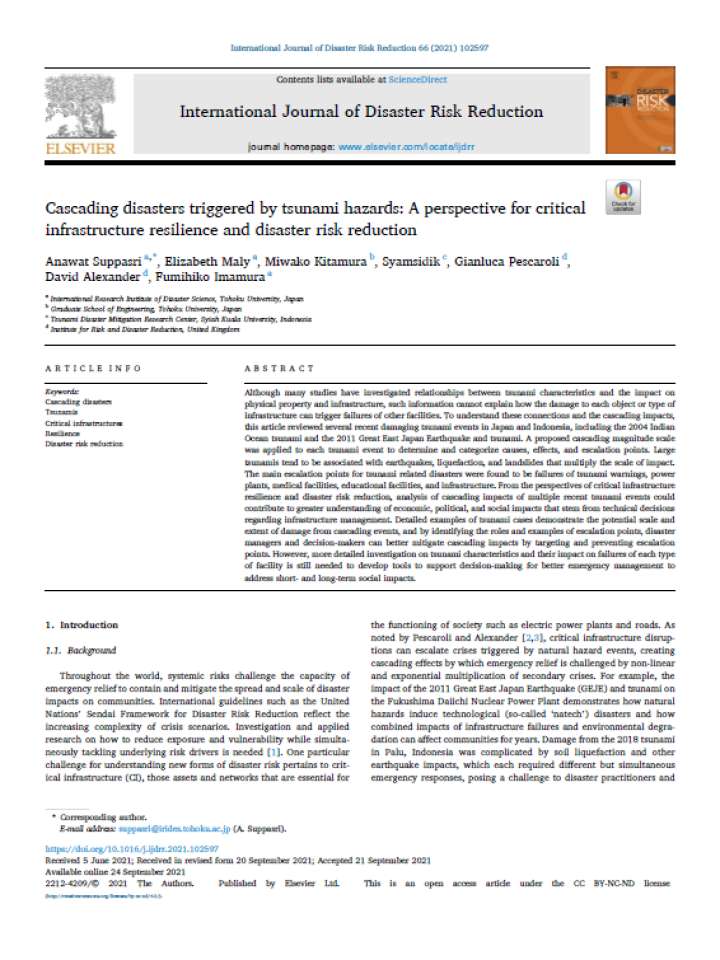Cascading disasters triggered by tsunami hazards: A perspective for critical infrastructure resilience and disaster risk reduction
Although many studies have investigated relationships between tsunami characteristics and the impact on physical property and infrastructure, such information cannot explain how the damage to each object or type of infrastructure can trigger failures of other facilities.
To understand these connections and the cascading impacts, this article reviewed several recent damaging tsunami events in Japan and Indonesia, including the 2004 Indian Ocean tsunami and the 2011 Great East Japan Earthquake and tsunami. A proposed cascading magnitude scale was applied to each tsunami event to determine and categorize causes, effects, and escalation points. Large tsunamis tend to be associated with earthquakes, liquefaction, and landslides that multiply the scale of impact. The main escalation points for tsunami related disasters were found to be failures of tsunami warnings, power plants, medical facilities, educational facilities, and infrastructure. From the perspectives of critical infrastructure resilience and disaster risk reduction, analysis of cascading impacts of multiple recent tsunami events could contribute to greater understanding of economic, political, and social impacts that stem from technical decisions regarding infrastructure management. Detailed examples of tsunami cases demonstrate the potential scale and extent of damage from cascading events, and by identifying the roles and examples of escalation points, disaster managers and decision-makers can better mitigate cascading impacts by targeting and preventing escalation points.
However, more detailed investigation on tsunami characteristics and their impact on failures of each type of facility is still needed to develop tools to support decision-making for better emergency management to address short- and long-term social impacts.
Explore further
